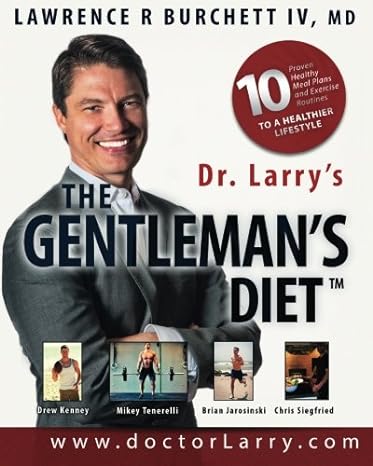5 Reasons to Keep a Food Diary

[cs_content][cs_section bg_color=”hsl(0, 0%, 100%)” parallax=”false” separator_top_type=”none” separator_top_height=”50px” separator_top_angle_point=”50″ separator_bottom_type=”none” separator_bottom_height=”50px” separator_bottom_angle_point=”50″ style=”margin: 0px;padding: 45px 0px;”][cs_row inner_container=”true” marginless_columns=”false” style=”margin: 0px auto;padding: 0px;”][cs_column fade=”false” fade_animation=”in” fade_animation_offset=”45px” fade_duration=”750″ type=”2/3″ style=”padding: 0px;”][x_custom_headline level=”h1″ looks_like=”h1″ accent=”false”]5 Reasons to Keep a Food Diary[/x_custom_headline][cs_text]Reviewed & Approved by Dr. Larry
[dropcap]H[/dropcap]ow many grams of sugar have you had today? What time did you have breakfast this morning? Exactly how many chips did you eat at lunch? Most of us like to think we know what we are consuming, but without a written record of our eating habits, it can be difficult to answer questions like these.
A food diary can be a useful learning tool, allowing you to see exactly what you are eating, when you are eating it, and how it makes you feel. If you want to eat healthier, lose weight, or simply be more aware of your nutritional habits, here are five compelling reasons to start tracking your consumption with a food diary:
- It makes you more aware of what you are consuming. The importance of being aware, remembering and actually knowing what you are eating cannot be overemphasized. Several online food diaries track your calorie and nutrient information for you, so you can see exactly how many grams of fat, carbs and protein you are consuming every day.
“I regularly do this exercise as well, especially when I want to get better results and make some changes. This is an essential tool that I want you to learn how to do for life.”
- It helps you identify areas for improvement. Food diaries aren’t just for beginners — even our registered dietician, Allison Evanson, keeps a food diary up to a couple times a year. If you are months or even years into a healthier lifestyle, but have plateaued and are looking for ways to make changes, you can use a food diary to find new ways to get better results.
- It teaches you what a portion size really is. To log your food accurately, you may start weighing out portions using a kitchen scale. Over time, you will learn to visually recognize what appropriate portions are.
“I like diet journals for many reasons. When you write everything down, you become conscious of things you didn’t realize you are eating. I had a patient who told me she ate ‘some chips.’ When we did a diet journal, she realized she would often eat A WHOLE BAG OF CHIPS!! And not the lunch-sized bag, either.”
- It can make you conscious of emotional eating. As you log your meals and snacks, you may start to notice certain patterns — for example, you may reach for an extra slice of pizza after a particularly stressful day at work. Knowing when and why you overeat or choose certain foods can be valuable.
- It can help you track your energy. Make notes in your food diary not only about what you are eating, but also how you feel, both in terms of hunger and emotionally. Jot down your energy level before you eat and one to two hours after eating — this can help you track which foods induce a food coma and which ones give you a powerful energy boost.
Whether you stick with your food journal as a long-term tool or use it periodically to check in and track your progress, everyone should try keeping a food diary at least once. It can be an eye-opening experience for anyone interested in the food they are putting in their body.[/cs_text][x_gap size=”50px”][/cs_column][cs_column fade=”false” fade_animation=”in” fade_animation_offset=”45px” fade_duration=”750″ type=”1/3″ style=”padding: 0px;”][x_widget_area sidebar=”sidebar-main” ][x_widget_area sidebar=”ups-sidebar-adoption-services” class=”man”][/cs_column][/cs_row][cs_row inner_container=”true” marginless_columns=”false” style=”margin: 0px auto;padding: 0px 0px 30px;border-style: solid;border-width: 1px;”][cs_column fade=”false” fade_animation=”in” fade_animation_offset=”45px” fade_duration=”750″ type=”1/1″ style=”padding: 0px;”][cs_text]
Featured Content
[/cs_text][/cs_column][/cs_row][/cs_section][cs_section parallax=”false” separator_top_type=”none” separator_top_height=”50px” separator_top_angle_point=”50″ separator_bottom_type=”none” separator_bottom_height=”50px” separator_bottom_angle_point=”50″ style=”margin: 0px;padding: 20px 0px 0px;”][cs_row inner_container=”true” marginless_columns=”false” style=”margin: 0px auto;padding: 0px;”][cs_column fade=”false” fade_animation=”in” fade_animation_offset=”45px” fade_duration=”750″ type=”1/1″ style=”padding: 0px;”][ess_grid alias=”featured_content”][/cs_column][/cs_row][/cs_section][/cs_content]


